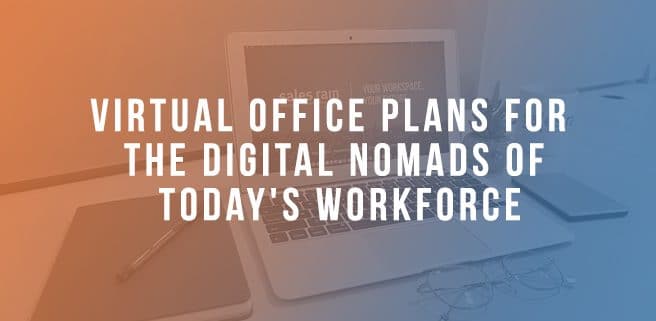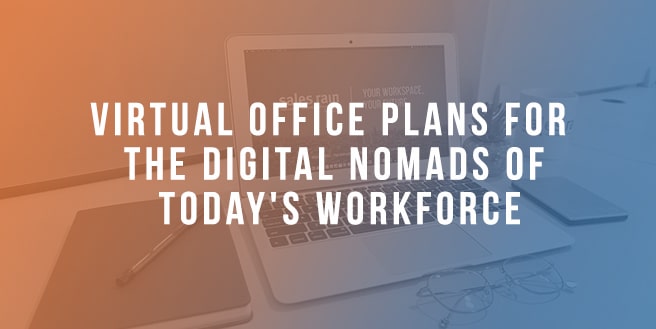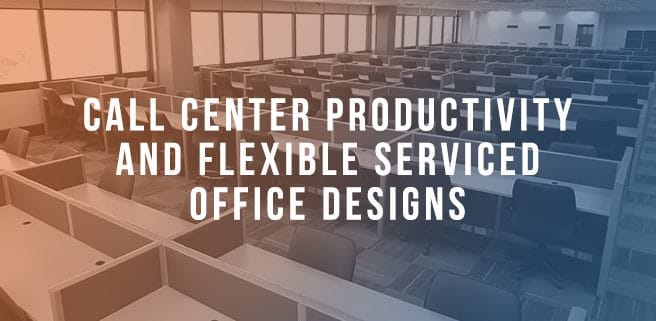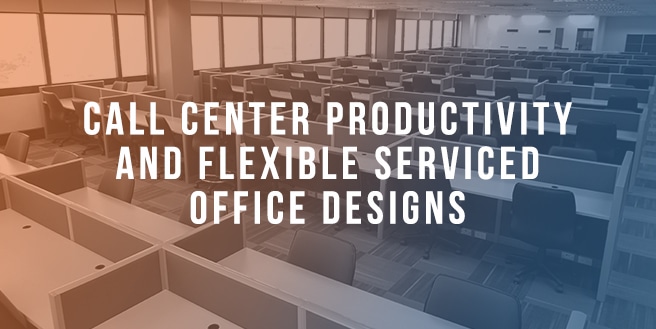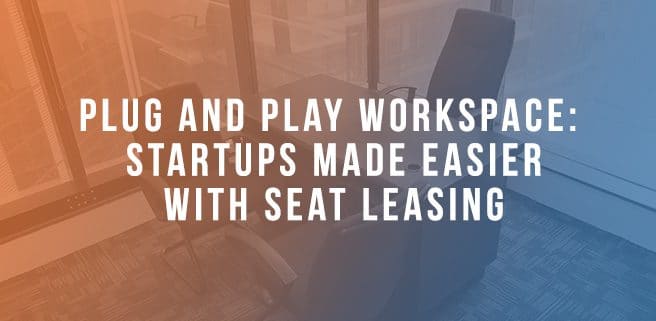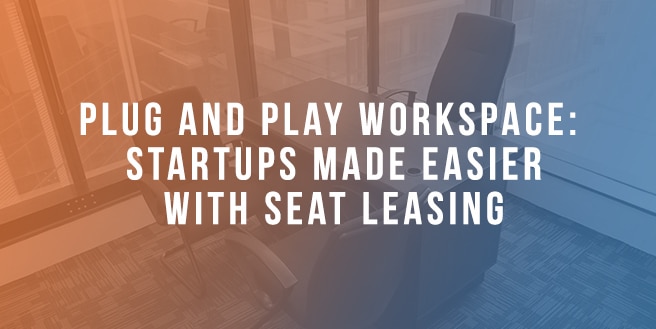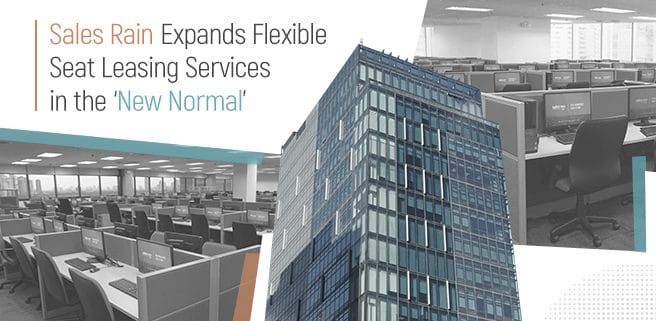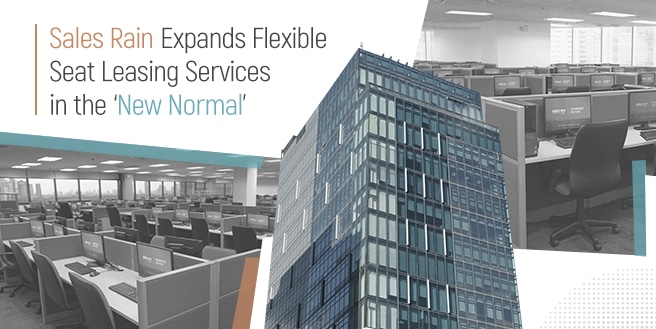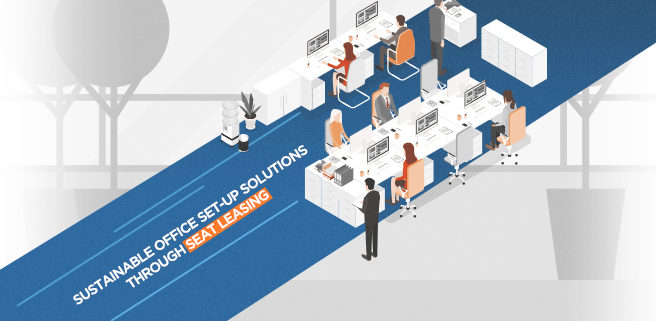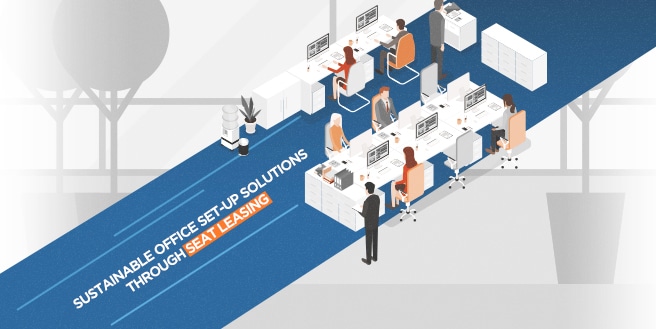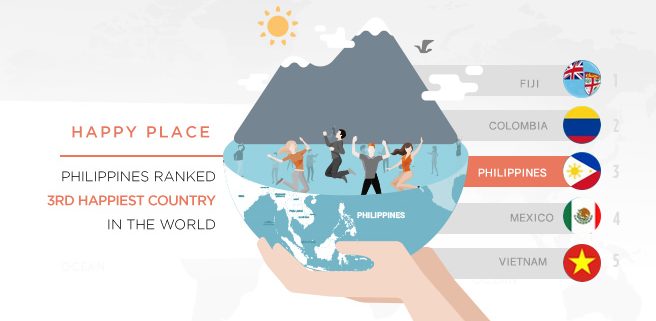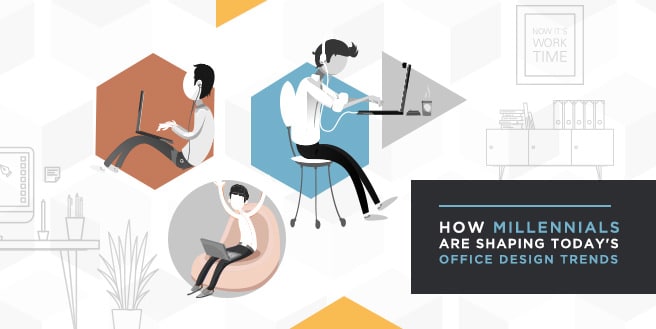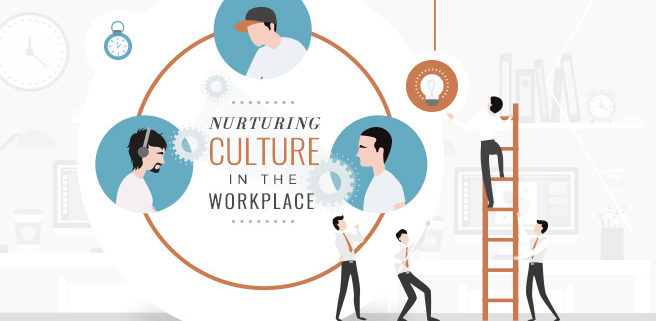
It is a well-known fact that the Filipino people, together with its beloved homeland, went through several bleak circumstances the past year. With the rampant war on drugs and the various political disputes that they have witnessed firsthand, one would assume that these individuals would be pessimistic about the coming year.
Yet it seems that this is not the case at all.
According to the Gallup’s annual global End of Year Survey, the Philippines ranked third as the happiest country in the world following Fiji and Columbia – a completely stark contrast to the results of the 2017 World Happiness Report wherein the Philippines found itself all the way down to the 72nd place.
Orchestrating an opinion poll amongst 55 countries, the aforementioned research covered the overall optimism of the participating countries for the coming 2018. The Philippines garnered a net rate of +84 in the study’s happiness index and a net rate of +40 in its hope index, classifying it as the 9th optimistic country in the world.
Presidential Communications Secretary Martin Andanar said in a conference last Wednesday, January 3rd that the current administration would see to it that the Filipino people’s happiness will have a strong foundation by ensuring improvement of the economy and of the government as well.
Economic Optimism, Hope, and Happiness
Going further, the study reported a decline in economic optimism over the last months. Results showed that though 28% of the world now possess a confident outlook towards the year 2017, economic pessimism remain to be 2 points higher. A downward trend has been observed since the end of 2015 down to the end of 2017.
As for hope, a bit less than 40% of the surveyed population believe that 2018 will surely be better than 2017 – 13 points down compared to last 2016. An alarming 23% expect an even worse year and 32% believe that things will remain to be the same as 2017.
Lastly, over two-thirds or 59% of the participating communities claim that they are happy – almost 10 points lower in contrast to twelve months ago. And though the past year was deemed to be a tough one with numerous terrorist attacks around the world, majority of all the respondents are happy.
Third Happiest Country
Presidential spokesperson Harry Roque says that the country’s ranking didn’t surprise him. In a statement to Inquirer, Roque said that Filipinos are known to be happy, resilient people who manage to smile amid difficulties. Hence, it’s not much a surprise to him that the Philippines ranked 3rd in the global happiness index.
The Filipino people’s inborn nature of hospitality is one of the major characteristics that attract foreigners besides its beautiful beaches and scenery. Digital nomads is sure to have an easy time settling in with the help of its friendly locals. In addition to this, plenty of coworking spaces can now be found scattered among the islands. These shared offices is home to several passionate resident professionals always ready to welcome new members with open arms – another crucial factor that captivated the hearts of remote workers.
Freelancers and entrepreneurs fell in love with the country’s happy nature for it helps them overcome loneliness that is often felt by independent workers. According to a 2010 YouGov poll, a vast majority of homeworkers suffer loneliness and isolation as they don’t have the presence and support of colleagues and workmates.
Recently, an alarming increase of the number of affected workers have been observed, resulting to psychologists and scholars highlighting the potential danger it possess. A study from the University of North Carolina reports that loneliness can elevate an individual’s risk of heart disease, stroke as well as cancer – making it as menacing to your health as the lack of physical activity. Majority of us have undermined loneliness and isolation for years, unaware of how treacherous it could actually be.
Experts says that in order to alleviate this, collaborating with other fellow professionals is suggested rather than isolating oneself. By doing so, it gives them the opportunity to have a helping hand in terms of tasks and even someone to confide during bleak days.
Nowadays it’s become one of the most contributing factors as to why the coworking movement continues to rapidly grow. The Philippines’ contagious happiness and relentless hospitality have made it even a more desirable country to cowork in.
Want to catch a dose of the happy virus? Talk to us today on how to find the perfect spot in the third happiest country in the word!

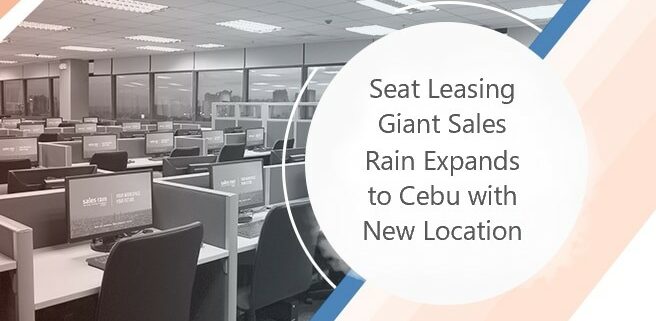

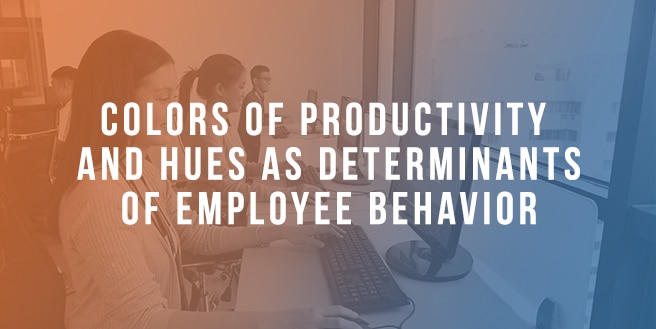
 Though the effect of each color has different meaning from one person to another, Color Psychologist Angela Wright said that there are four primary psychological colors; red, blue, yellow and green.
Though the effect of each color has different meaning from one person to another, Color Psychologist Angela Wright said that there are four primary psychological colors; red, blue, yellow and green.